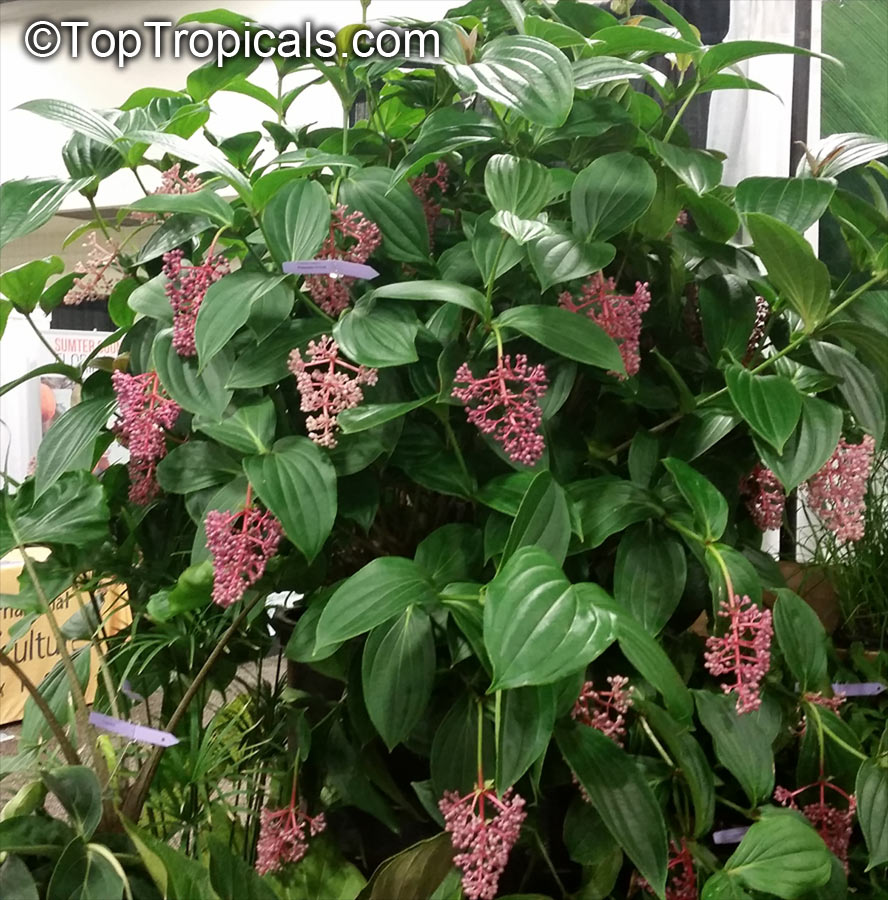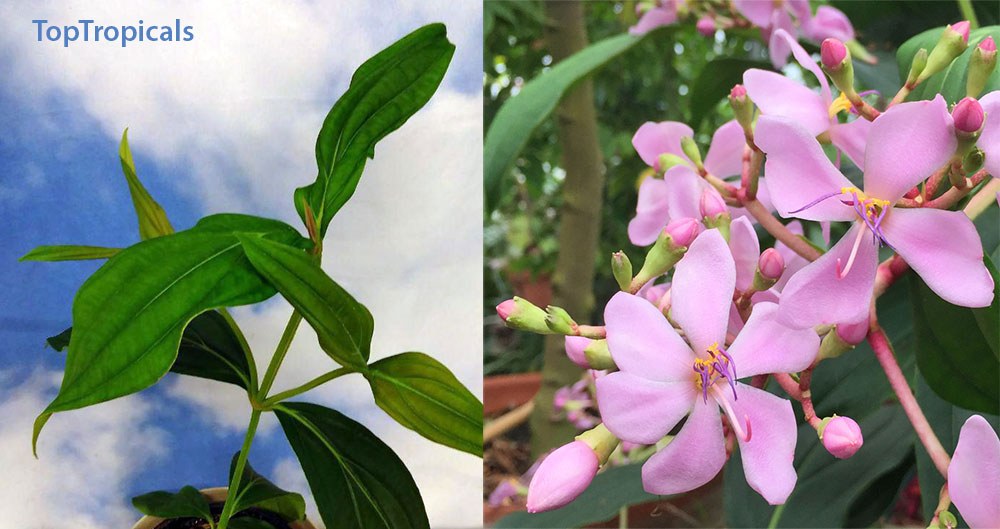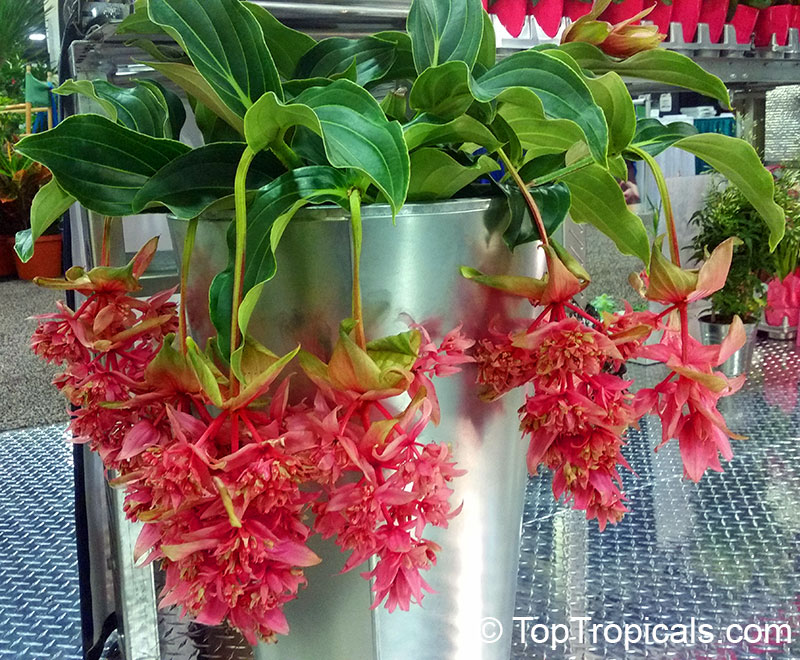The Rolls Royce of House Plants: Medinilla
by Onika Amell
About the Author
Onika Amell was born in farmer's family in Cape Town, South Africa, and always had a keen interest in gardening. She has been a globe-trotter for many years, traveling along with her husband, an engineer, and her life is worth a novel. In Cape Town she worked in groups “Soil for Life and Work for Love”, teaching people how to grow their own food, improve their health, and protect the environment. Onika lived in Galilee, Israel, skydiving over 500 jumps and working on the fields planting, harvesting and caring for various crops (Lychee, Avocado, Bananas, etc), helping out in community gardens... In SE Asia, she taught English at business centers... Upon finally settling in SW Florida, she joined the ECHO Global Farms project on teaching farmers/families around the world about effective crop production... Now as a part of Top Tropicals Team, Onika is our plant expert and a columnist. Onika's biggest passions are plants and... of course – cats, who are her children! She has six of them: Itembi, Freddie Mercury, Donald Trump (he is the difficult one), Tigerlilly, Sweetie, and Jaxson.
Q: Is Medinilla easy to grow as a houseplant?
A: Medinilla originates in tropical Africa, SE Asia and the Pacific Islands. This is an extremely showy tropical plant with bunches of bright pink blooms that will flower for months on end. What a stunning and colorful plant! Showy should be its middle name. It is one of those plants that truly evokes feelings of elegance and drama.
Medinilla enjoys a humid environment. The plant can be misted to increase humidity but take care not to spray the blooms. They do well as houseplants in warm, bright areas of the home. No direct sunlight ever. Bright, filtered light through a blind of curtain is perfect.
The ideal temperature for the Medinilla is between 65 and 85 degrees F. The temperature can be lowered slightly during the winter period, but not below 45 degrees F to avoid stressing the plant. In subtropical gardens, this plant can withstand even lower te,peratures and even a light frist for a bery short time, however in this case some leaf damage may occur.
Remember to rotate the plant from time to time as it will help to provide even light and will ensure balanced growth. Medinilla has average watering needs. It is very important to allow this plant to dry between watering. Being an epyphite (and also called Malaysian orchid), it wants to be kept on they dry side rather than too wet. Water your Medinilla until thoroughly moistened though. This is particularly important during the growing season. Then make sure the top of the soil is dry before watering again. During the rest period (in winter) water just enough to stop the soil from drying out completely. Continue to water moderately again in early-mid Spring when flower stalks are emerging.
Repot only when absolutely necessary. A tell tale sign is usually when roots are visible at the bottom of the pot. Early Spring is always the best time to move your plant into a pot that is one size bigger and/or to apply new top dress. It will give the plant enough time to recover from any damage or shock. Take very good care not to damage the roots. Use a good quality, porous potting soil. We recommend:
Abundance - TopTropicals professional soilless potting mix. Available in 2, 3 and 7 gallons bags.
These plants will thank you for applying a liquid fertilizer every two weeks once flower buds begin to open. The best fertilizer for medinilla - is a mild Bombino.
Medinilla is an epiphyte or air plant in nature. In the wild, it often attaches itself to trees like an orchid. For those of you who live in USDA zone 10 through 12 it is actually a great idea to try and attach a plant to a branch. Or simply plant them in partially shaded locations outdoors.
Medinilla apoensis - Philippine Pink is particularly rare and hard to find in the trade. The flowers on this particular Medinilla is not hidden underneath so it is not necessary to grow it in a hanging basket like so many other species. It is a tall upright grower that will flower throughout the summer.
For all you obsessed collectors out there, do not hesitate. This Medinilla is not in many US collections. The plants we have right now are at least one to one and a half feet tall and are blooming size. Wink wink ;)



